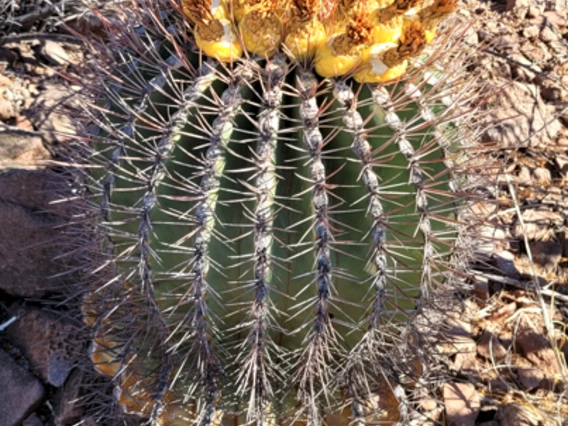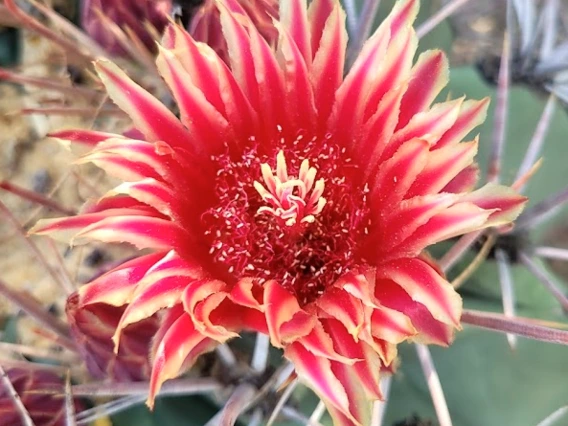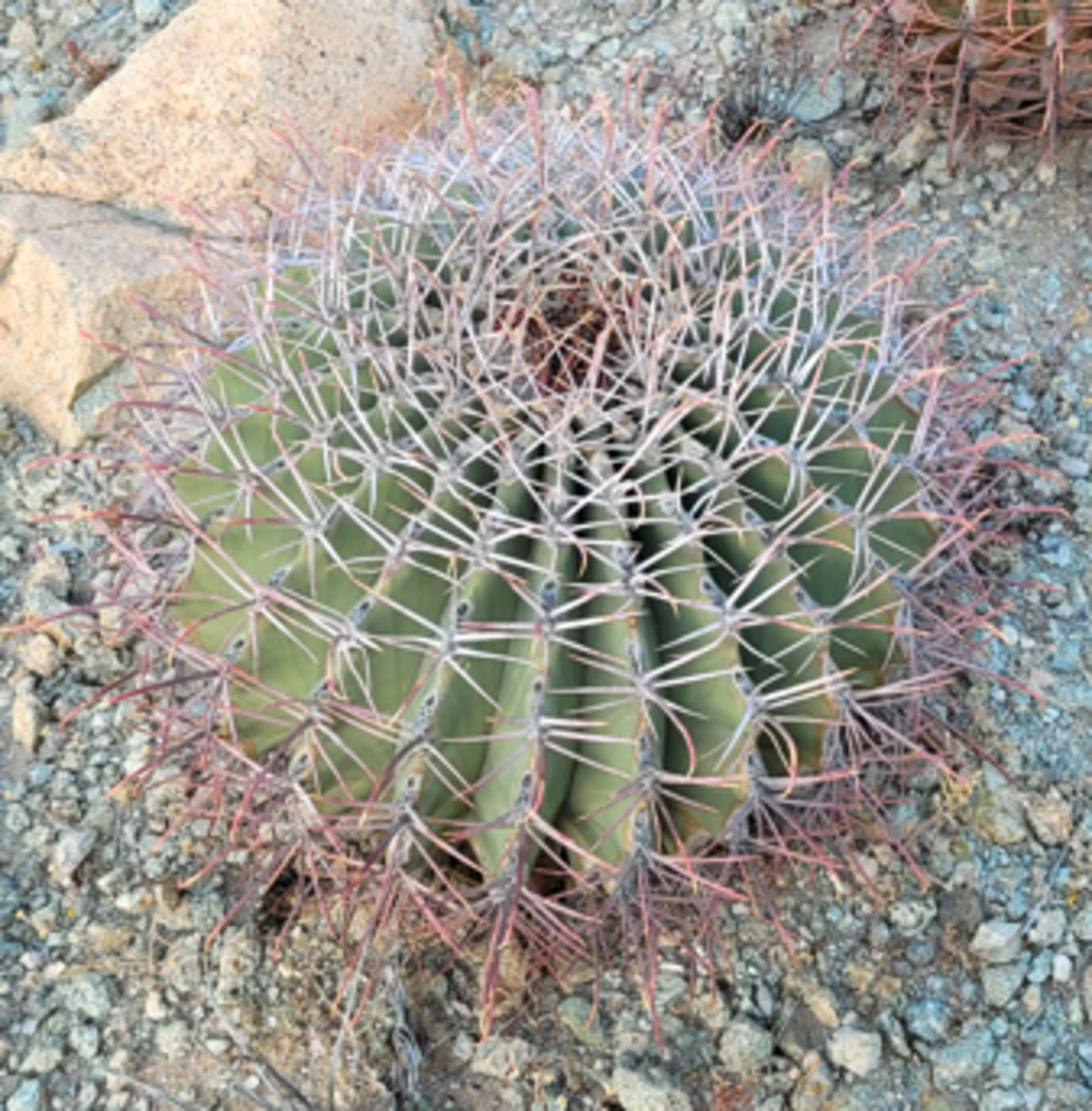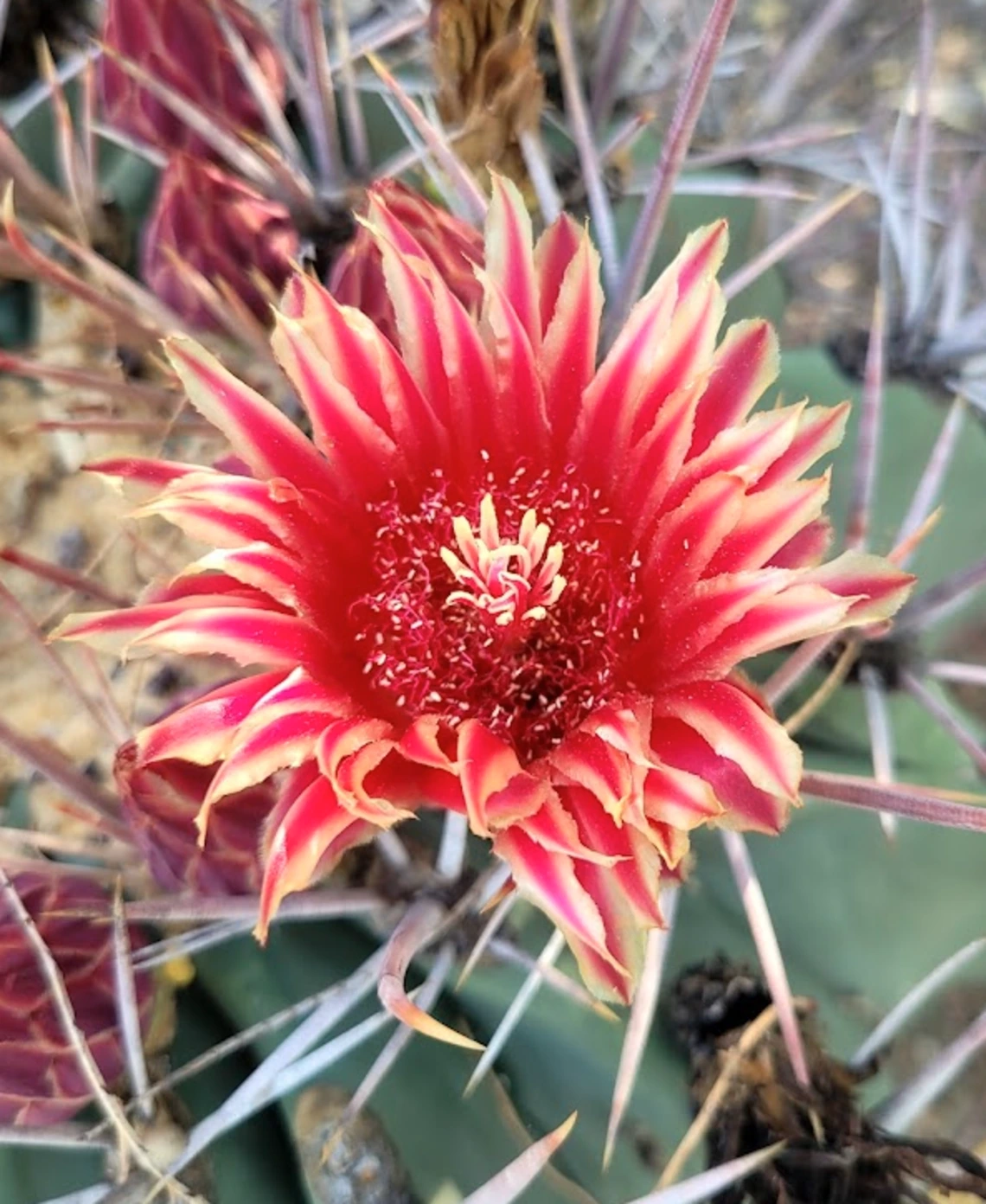Family: Cactaceae
Compound: Fer emo
Synonyms: Ferocactus covillei, Echinocactus emoryi
Geographic Origin: AZ, northwestern MX
Characteristics: A robust green to blue-green globular to short columnar cactus, with 20 to 30 ribs which allow the plant to expand and contract with water intake. ~6 strong, stiff radial spines, and a straight to lightly hooked central spine grow from the areoles along the ribs. The spines are variable in color, ranging from white to red. This species produces yellow to red flowers around the meristem. After pollination, scaly, yellow, oval-shaped fruits, resembling pineapples develop. The fruits are fleshy and contain hundreds of tiny spherical black seeds.
Natural History: Typically found at elevations below 1188m (0-3900ft) in flats, bajadas and rocky slopes. Flowers are vibrant and visible from a distance, allowing the many pollinators that visit them to find them. The fruits are edible, and likely an important food source for wildlife. After death, the decomposing bodies provide shelter and food for many small animals. The fleshy tissues of the cacti are likely consumed by big horn sheep during seasonal droughts.
Cultivation Notes: Easily grown from seed, which fall out of the base of the fruit when plucked from plant. Adult plants can take partial to full sun, though care must be taken to acclimate them to these conditions if being transplanted. Make sure that the side of the plant that was facing south at the nursery is still facing south when planted in your yard. When grown in containers, a fast-draining soil mix is ideal to avoid rot, but in the ground, they tolerate poorer soils.
For general cactus and succulent propagation information, click here
Ethnobotany: The Comcaac people of Sonora have used Ferocactus emoryi as a source of food and medicine. At the same time, the species is valued in cultivation, and by pollinators and other insects. Nectar is produced at the top of the cactus that is used to feed the territorial ants that live at its base. In return, the ants protect the cacti from other insect pests, and genetic diversity of the species is increased. In modern landscaping, the plant is favored for its striking appearance and low water use.
Citations:
Turner, Raymond M, et al. Sonoran Desert Plants: An Ecological Atlas. University of Arizona Press, 1995.
Llifle Encyclopedias of Living Forms
http://www.llifle.com/Encyclopedia/CACTI/Family/Cactaceae/21495/Ferocactus_emoryi
SEINet Arizona – New Mexico Chapter
https://swbiodiversity.org/seinet/taxa/index.php?taxon=Ferocactus+emoryi







